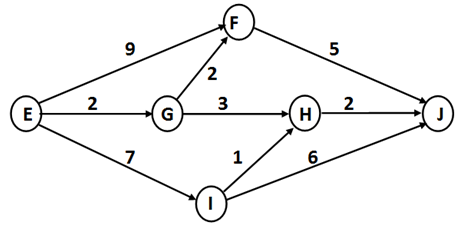Reasoning for nabard prelims: Topics you need to study for reasoning for nabard prelims Exam
To score well in Reasoning for NABARD Prelims exam, you need to start well in advance with your preparation. This exam is conducted in three phases. The first phase is Prelims, the second phase is Mains and the third and final phase is the interview. In order to be eligible for the Mains exam, you need to qualify Preliminary exam. Some of the important concepts that can be asked in Reasoning for NABARD Prelims exam are Analogy, Puzzles (Seating arrangement, linear seating arrangement, floor based), Syllogism, Data sufficiency, Statement based questions (Verbal reasoning), Inequality, Miscellaneous Questions, Input Output, Blood relations, Patterns and Series. Cover these topics individually to master each one of them and become familiar with the questions styles, types and patterns.
Directions for the question set:
Answer the questions on the basis of the information given below.
A significant amount of traffic flows from point E to point J in the one-way street network shown below. Points F, G, H and I are junctions in the network, and the arrows mark the direction of traffic flow. The fuel cost in rupees for travelling along a street is indicated by the number adjacent to the arrow representing the street.

Motorists travelling from point E to point J would obviously take the route for which the total cost of travelling is the minimum. If two or more routes have the same least travel cost, then motorists are indifferent between them. Hence, the traffic gets evenly distributed among all the least cost routes.
The government can control the flow of traffic only by levying appropriate toll at each junction. For example, if a motorist takes the route E-F-J (using junction F alone), then the total cost of travel would be Rs. 14. (i.e., Rs. 9 + Rs 5) plus the toll charged at junction F.
Question 1: If the government wants to ensure that the traffic gets evenly distributed along streets from E to F, from E to G, and from E to I so as to reach ‘J’, then a feasible set of toll charged (in rupees) at junctions F,G,H and I, respectively to achieve this goal is
(a) 0,4,3,2
(b) 1, 5, 3, 3
(c) 0, 5, 2, 2
(d) 1, 5, 3, 2
(e) 0, 5, 4,1
Question 2: If the government wants to ensure that all motorists travelling from E to J pay the same amount (fuel costs and toll combined) regardless of the route they choose and the street from G to H is under repairs (and hence unusable), then a feasible set of toll charged (in rupees) at junctions F,G, H and I respectively to achieve this goal is :
(a) 2, 5, 3, 2
(b) 0, 5, 3, 1
(c) 1, 5, 3, 2
(d) 2, 3, 5, 1
(e) 1, 3, 5, 1
Question 3: If the government wants to ensure that all routes from E to J get the same amount of traffic, then a feasible set of toll charged (in rupees) at junctions F,G,H and I respectively to achieve this goal is
(a) 0, 5, 4, 1
(b) 0, 5, 2, 2
(c) 1,5,4,2
(d) 1, 5, 3, 2
(e) 1, 5, 3, 3
Question 4: If the government wants to ensure that no traffic flows on the street from I to J, while equal amount of traffic flows through junctions F and H, then a feasible set of toll charged (in rupees) at junctions F,G,H and I respectively to achieve this goal is
(a) 1, 5, 3, 3
(b) 0, 5, 2, 3
(c) 1, 5, 4, 2
(d) 1, 4, 4, 3
(e) 0, 5, 2, 2
Question 5: The government wants to devise a toll policy such that the total cost to the commuters per trip is minimized. The policy should also ensure that not all of the total traffic passes through junction G. The cost incurred by the commuter travelling from point E to point J under this policy will be
(a) Rs. 7
(b) Rs. 9
(c) Rs. 10
(d) Rs. 13
(e) Rs. 14
Answers and Explanations: Click the down arrow to expand
F = 1, G = 5, H = 3, I = 2
E⇒F: EFJ = 9 + 1 + 5 = Rs.15
E⇒G: EGFJ = 2 + 5 + 2 + 1 + 5 = Rs.15
EGHJ = 2 + 5 + 3 + 3 + 2 = Rs.15
E⇒I: EIHJ = 7 + 2 + 1 + 3 + 2 = Rs.15
EIJ = 7 + 2 + 6 = Rs.15
The correct option is (d).
Answers 2: (b) It is given in the question that path GH is under repair, hence, available paths to reach from E to J are EGFJ, EFJ, EIHJ and EIJ. Now, using options, we find that option (b) gives the same cost of travel from S to T.
Putting F = 0, G = 5, H = 3, I = 1,we get
EGFJ = 2 + 5 + 2 + 0 + 5 = Rs.14
EFJ = 9 + 0 + 5 = Rs.14
EIHJ = 7 + l + l + 3 + 2 = Rs.14
EIJ = 7 + l + 6 = Rs.14
The correct option is (b).
Answers 3: (d)
For option (d), we have
F = 1, G = 5, H = 3, I = 2
EFJ = 9 + l + 5 = Rs.15
EGFJ = 2 + 5 + 2 + 1 + 5 = Rs.15
EIJ = 7 + 2 + 6 = Rs.15
EIHJ = 7 + 2 + l + 3 + 2 = Rs.15
EGHJ = 2 + 5 + 3 + 3 + 2 = Rs.15
The correct option is (d).
Answers 4: (e) Available routes through F and H are EFJ,EGFJ,EGHJ,EIHJ and EIJ. Now out of these paths we need equal traffic (hence equal cost) through each of the first 4 paths while greater cost on the last path will fulfil our objective of ensuring that no traffic flows through I-J. Option (e) gives the same cost of travel through all the first 4 travel paths while giving highest cost over I-J path
EFJ = 9 + 0 + 5 = Rs.14
EGFJ = 2 + 5 + 2 + 0 + 5 = Rs.14
EGHJ = 2 + 5 + 3 + 2 + 2 = Rs.14
EIHJ = 7 + 2 + l + 2 + 2 = Rs.14
EIJ = 7 + 2 + 6 = 15
The correct option is (e).
Answers 5: (c) Since the question focuses on minimising the total cost, hence we should begin evaluating the answer options one by one starting from the least.
We must also note that since we do not want all traffic to go through G, hence we must have atleast 2 paths with the minimum cost attached to them.
Option (a) is ruled out because cost incurred from E to J will be Rs 7 only through EGHJ assuming toll charges as G = 0 and H = 0, but in this case all traffic will be moving through junction G since no other route in this case will have equal cost as EGHJ.
Option (b) is ruled out because cost incurred from E to J will be Rs 9 when toll at G = 0 and H = 2. In this case, also all traffic will be diverted through junction G since no other route in this case will have equal cost as EGHJ.
Using option (c), the travel cost from E to J through G will be Rs. 10 which can be made by keeping the cost at junction G = 3 and H = 0 .
EGHJ = 2 + 3 + 3 + 0 + 2 = Rs.10 and the same cost will be incurred through
EIHJ = 7 + 0 + l + 0 + 2 = Rs.10
Since, Rs 10 is the least, hence, options (d) and (e) are ruled out.
The correct option is (c).
Extra tips for reasoning for NABARD prelims:
• Try maximizing the use of option elimination in reasoning for NABARD prelims exam. This method saves time and effort which can be utilized for other questions in the exam.
• If you are stuck on a particular question in the set, flag it for the time being and move ahead to solve other questions in the set or to other sets as it helps you cover greater amount of questions, instead of cracking fewer questions.
• Prepare notes for reasoning for NABARD prelims exam as it will help you revise and recollect important points.











